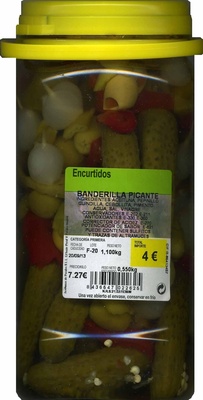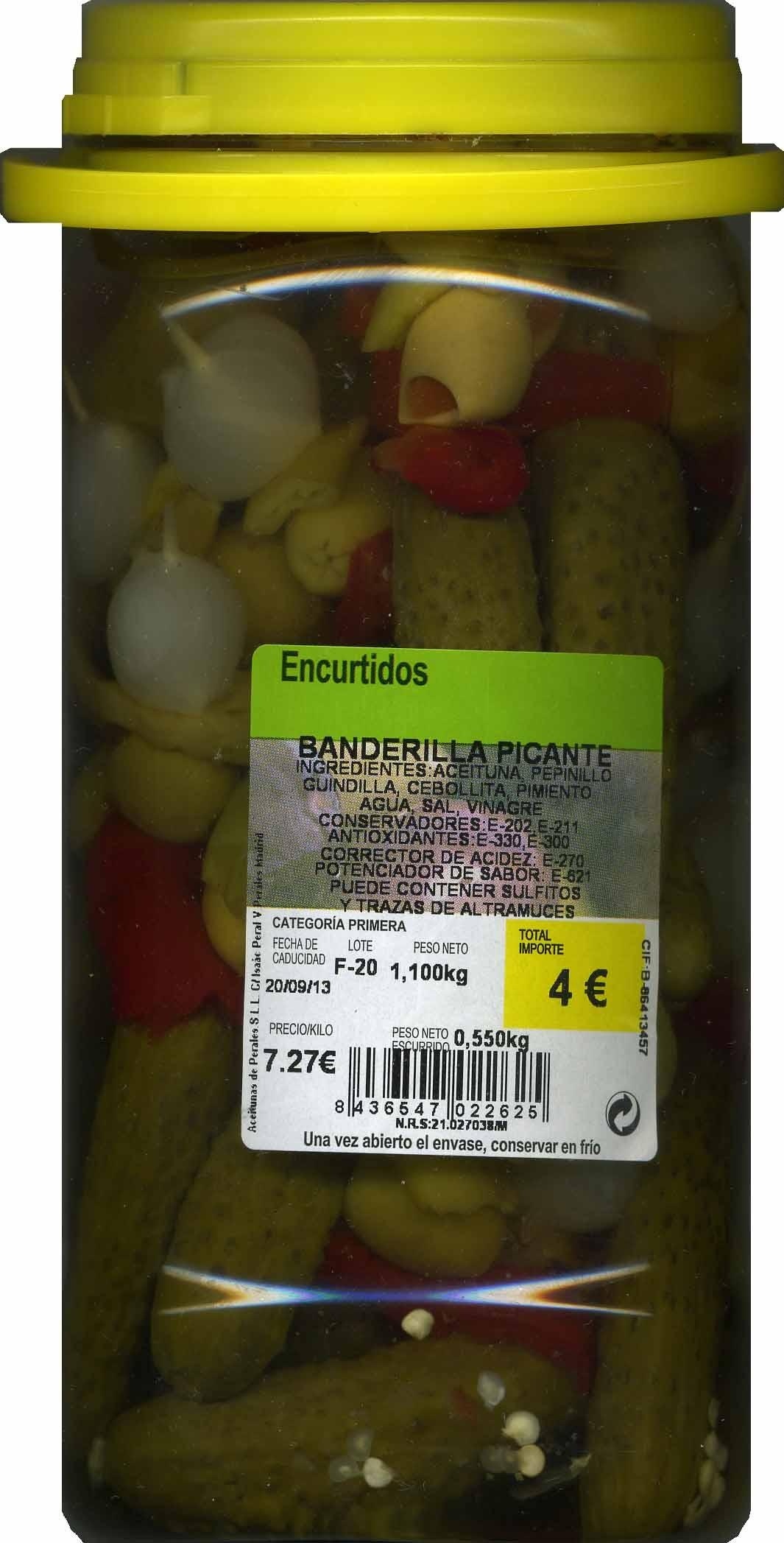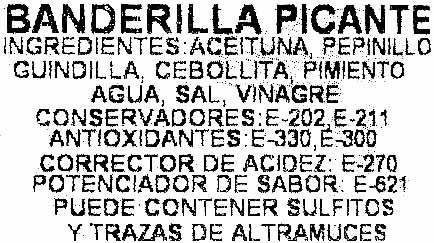Surtido de encurtidos en banderillas - Aceitunas de Perales - 1.100 g (neto), 550 g (escurrido)
Aquesta pàgina del producte no està completa. Podeu ajudar a completar-la editant-la i afegint-hi més dades a partir de les fotos ja disponibles, o fent-ne més amb l'aplicació de androide o iPhone / iPad. Gràcies!
×
Codi de barres: 8436547022625 (EAN / EAN-13)
Nom comú: Surtido de encurtidos ensartados en banderillas
Quantitat: 1.100 g (neto), 550 g (escurrido)
Empaquetament: es:Bote de plástico
Marques: Aceitunas de Perales
Categories: Aliments i begudes amb base vegetal, Aliments amb base vegetal, Aliments amb base de fruites i verdures, Aliments amb base de verdures, Conserves, Conserves vegetals, en:Plant-based mixed pickles, en:Banderillas
Etiquetes, certificacions, premis:
Vegetarià, Punt verd
Llocs de fabricació o processament: Villanueva de perales, Madrid (comunidad autónoma), España
Codi de traçabilitat: FABRICANTE:, DESCONOCIDO, ENVASADOR:, ES 21.027038/M C CE, ACEITUNAS DE PERALES S.L.L.
Botigues: Carrefour
Països on es va vendre: Espanya






